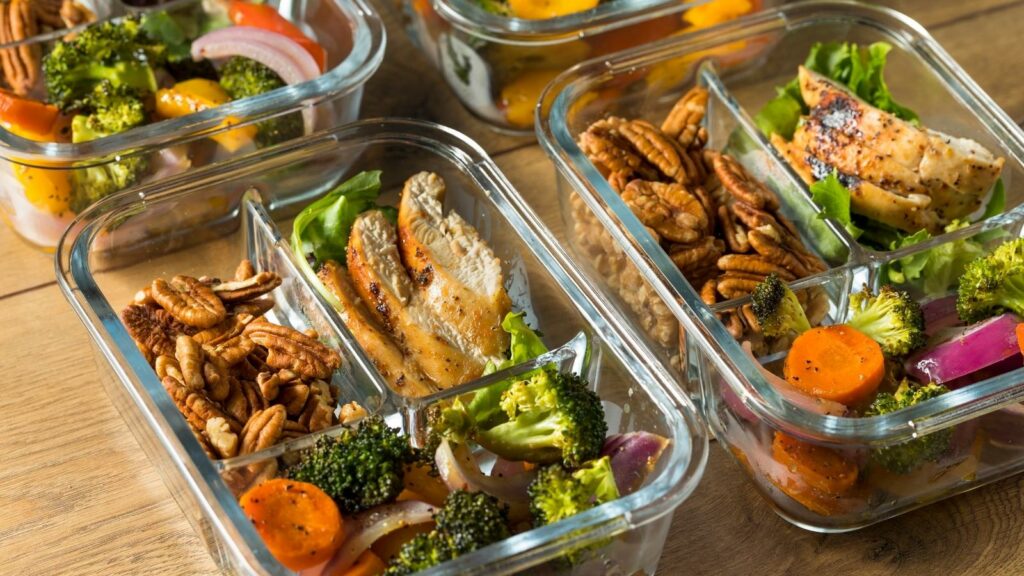
How to Meal Prep — A Beginner’s Guide
Meal prepping is a great way to save time, money, and effort in the kitchen while maintaining a healthy and balanced diet. Whether you’re a busy professional, a student, or simply someone looking to streamline their mealtime routine, meal prepping can be a game-changer. In this comprehensive guide, we will take you through the step-by-step process of how to meal prep effectively, even if you’re a beginner.
Plan Your Meals:
The first step in successful meal prepping is to plan your meals in advance. Start by creating a weekly or bi-weekly meal plan, taking into consideration your dietary preferences, nutritional needs, and any specific goals you may have. Aim for a good balance of macronutrients (carbohydrates, proteins, and fats) and incorporate a variety of colorful fruits and vegetables.
Make a Grocery List:
Once you have your meal plan, make a detailed grocery list. Take inventory of your pantry and fridge to see what ingredients you already have and what you need to buy. Organize your list by food categories to make your shopping trip more efficient. Stick to your list while at the store to avoid impulse purchases and unnecessary expenses.
Prep Your Kitchen:
Before you dive into meal prepping, ensure your kitchen is well-prepared. Clean and declutter your workspace, sharpen your knives, and gather the necessary cooking utensils, containers, and storage options. Having everything you need within reach will make the meal prep process smoother and more enjoyable.
Batch Cooking:
Batch cooking is the heart of meal prepping. Choose a convenient time during the week when you can dedicate a few hours to cooking in bulk. Prepare large quantities of proteins, such as chicken, beef, or tofu, as well as whole grains like quinoa or brown rice. Roast or steam a variety of vegetables, and consider making a big pot of soup or chili. Cook everything in one go to save time and energy.
Portion and Pack:
Once your cooked food has cooled down, portion it into individual servings. Use a food scale or measuring cups to ensure consistent portion sizes. Invest in a set of reusable meal prep containers that are microwave-safe and freezer-friendly. Pack each container with a balanced combination of proteins, grains, and vegetables. Label each container with the meal name and date to keep track of freshness.
Storage and Freezing:
If you’re planning to consume your prepped meals within a few days, store them in the refrigerator. However, if you’re meal prepping for an entire week or longer, consider freezing some portions. reezing maintains the freshness and quality of the food. Just remember to transfer frozen meals to the refrigerator the night before you plan to eat them to thaw properly.
Smart Assembly:
When assembling your meals, think strategically. Keep ingredients that can become soggy or lose their texture when reheated separate from each other. For example, pack dressings, sauces, or dips in separate small containers or use dividers to prevent them from coming into direct contact with other ingredients until ready to eat. This will help maintain the integrity and freshness of the meal.
Variety and Flexibility:
Don’t be afraid to experiment with flavors and ingredients to keep your meals exciting. Incorporate different spices, herbs, and marinades to add variety to your prepped meals. Additionally, consider preparing versatile ingredients that can be used in multiple dishes throughout the week. For example, roasted chicken can be used in salads, wraps, or stir-fries, providing versatility and avoiding monotony.
Safety and Hygiene:
Food safety and hygiene are crucial when it comes to meal prepping. Wash your hands frequently and ensure all cooking surfaces and utensils are clean. Cook foods to their recommended internal temperatures to prevent foodborne illnesses. When reheating prepped meals, ensure they reach an appropriate temperature to avoid bacteria growth. Practice proper storage techniques to keep your meals safe to eat.
Time-Saving Tips:
To make your meal prepping experience even more efficient, consider these time-saving tips:
- Use pre-cut or frozen vegetables to minimize preparation time.
- Cook multiple components simultaneously, utilizing different cooking methods.
- Utilize kitchen appliances such as slow cookers or Instant Pots to automate cooking processes.
- Prepare grab-and-go snacks like cut-up fruit, yogurt cups, or trail mix for quick and healthy snacks throughout the day.
- Remember, meal prepping is a personal journey that requires experimentation and adaptation to fit your lifestyle. Start small and gradually build up your skills and repertoire. With time, you’ll become more efficient and creative in the kitchen, making meal prepping an integral part of your routine. Enjoy the benefits of delicious, nutritious, and hassle-free meals!
- In-Depth Review The Best CBD Capsules By Players Choice CBD - August 31, 2024
- VAPES By Dietsmoke-The Ultimate Vaping Experience Comprehensive Review of Top Vape Products - March 8, 2024
- Where Can I Buy HHC Gummies - July 21, 2023

